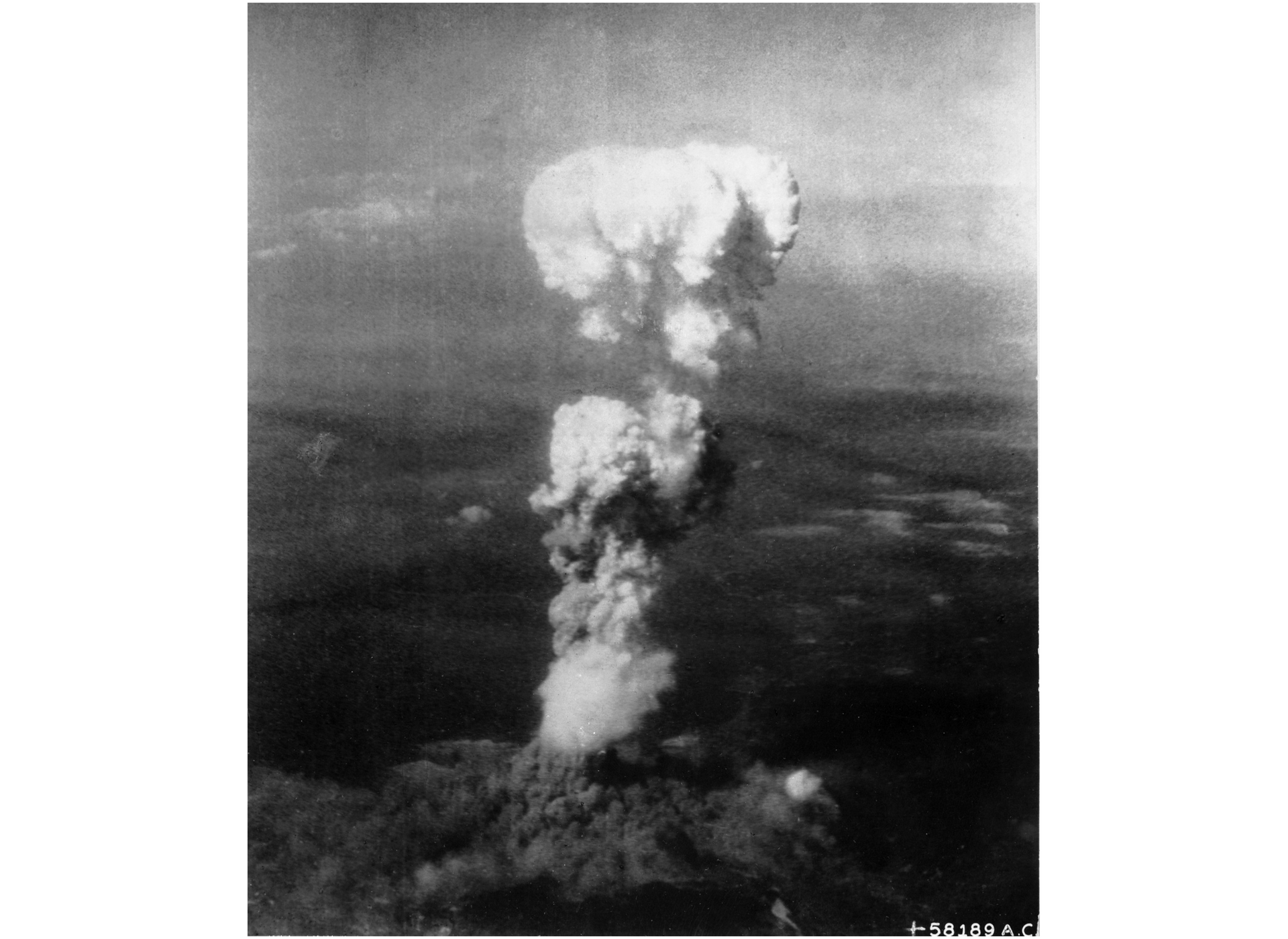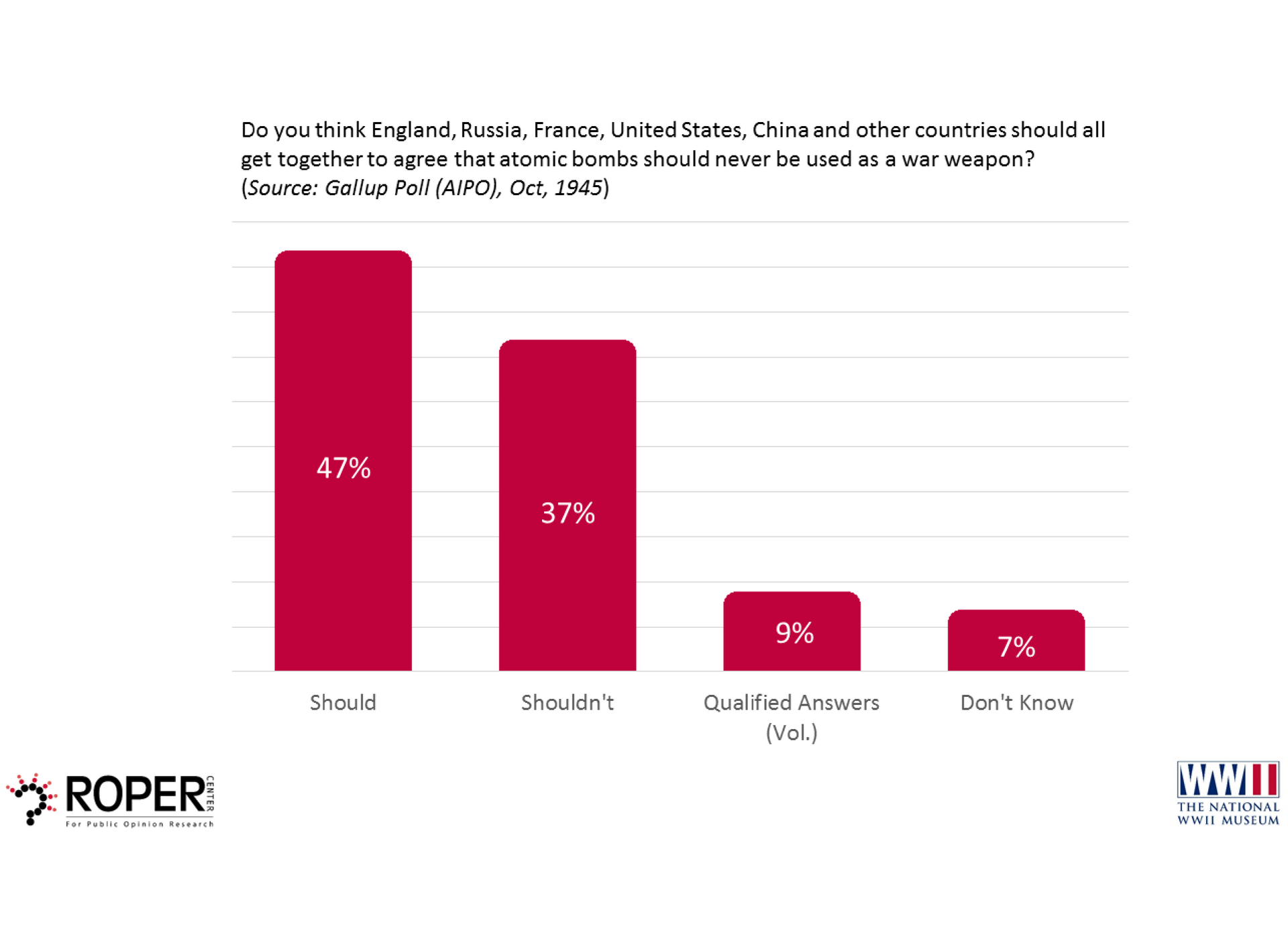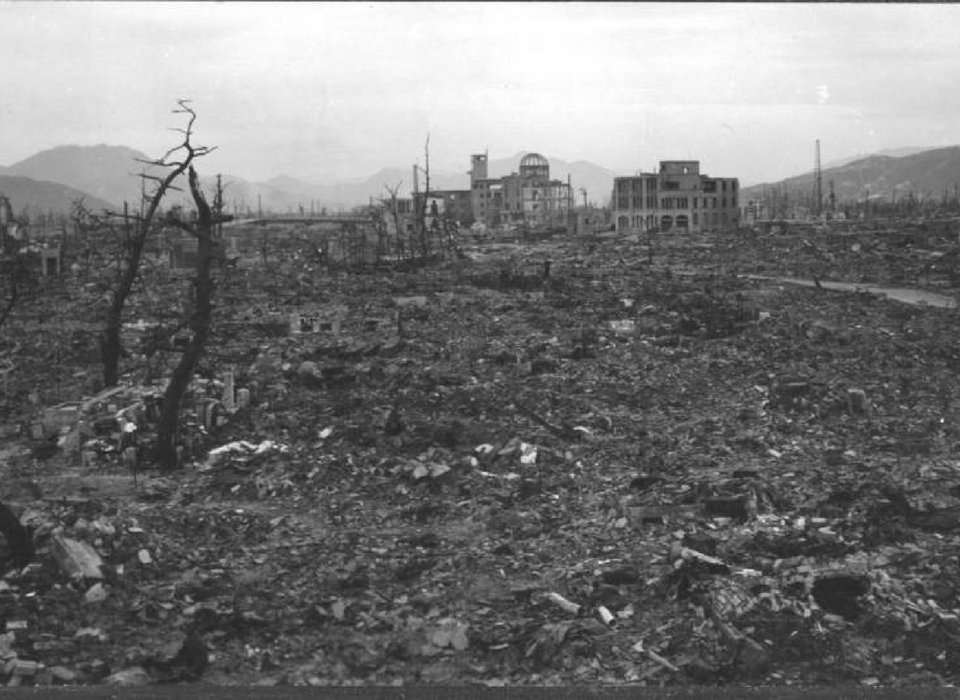Background before the poll was taken in October 1945.
In 1939, US intelligence discovered German scientists were developing a nuclear weapon that Adolf Hitler could use during the war. To combat this nuclear threat from Germany, the United States began funding research by Enrico Fermi studying nuclear chain reactions. Other scientists were also researching nuclear fission; most noteworthy were Robert Oppenheimer and Edward Teller. On December 7, 1941, Japan attacked Pearl Harbor and we were at war with the Japanese. A meeting took place in Manhattan in 1942 assigning the creation of a nuclear weapon to the US Army under the direction of Colonel Leslie R. Groves. The Manhattan Project combined the efforts of various sites throughout the country to develop and construct a nuclear weapon. On January 1, 1943, the Los Alamos Laboratory in New Mexico was established and Oppenheimer was named director of the facility. Within two years two different types of bombs had been created: “Little Boy.” a uranium weapon, and “Fat Man,” a plutonium weapon. On July 16, 1945, in the New Mexico desert, the first atomic bomb was exploded. The Trinity Test was a success and we entered the atomic area.
The Pacific war raged on into 1945, and casualties from the battles at Iwo Jima and Okinawa were some of the highest of the war. The firebombing of Japanese cities nearly left Tokyo completely destroyed. The fighting continued but the Japanese showed no signs of surrendering. Of the 21,000 Japanese soldiers defending Iwo Jima, only 216 surrendered, and most of those were already wounded. American military planners feared the prospect of invading Japan. The Japanese army was over one million strong on the home islands. The experience from Okinawa, where civilians committed suicide instead of surrendering, meant the loss of life among the civilian population would be horrific. When President Harry Truman was informed the atomic bomb test had been successful in New Mexico, he realized he had the opportunity to bring the four-year war to a sudden end. This was his decision to make and he reasoned millions of lives, both Americans and Japanese, would be saved.

On August 6, 1945, an American B-29 bomber, the Enola Gay, dropped the world’s first atomic bomb over the city of Hiroshima. Instantly the city was leveled and 80,000 people were killed. Another 60,000 died within the year from burns and radiation effects from the bomb. On August 9 a second bomb was dropped over the Japanese city of Nagasaki, with similar results. On August 14, 1945, the Japanese surrendered and World War II was over, but we now had a bigger problem, the ability to destroy ourselves with nuclear weapons.
How do you think the average American responded to this October 1945 poll about the use of atomic bomb as a war weapon?

Source: Gallup Poll, October 1945, Roper Center for Public Opinion Research at Cornell University.
What happened after the poll was taken in October 1945
International community monitors nuclear testing!
When World War II was over the United States initially had a monopoly on atomic weapons; but, as the world slipped into the Cold War the Soviet Union stepped up their efforts to create an atomic weapon. They successfully tested a nuclear device in September 1949 and the arms race began between the United States and the Soviet Union. As testing of nuclear weapons continued on both sides, the public became aware of the dangers associated with radioactive fallout. Lead by the United Nations, the Disarmament Commission (which included the United States, the United Kingdom, Canada, France and the Soviet Union) began to negotiate a way to limit nuclear testing in 1955. After eight years of negotiations, the first significant agreement pertaining to nuclear weapons was signed in 1963 by the United States, Soviet Union, and the United Kingdom. It prohibited the testing of nuclear weapons in the atmosphere, outer space, and underwater. It allowed for nuclear testing to be conducted underground within the boundaries of the testing country. The Limited Test Ban Treaty has subsequently been signed by a total of 116 countries and represented the most serious effort by the international community to monitor nuclear testing at the time. There became a growing concern that the United States and the Soviet Union could unwillingly enter into an exchange of nuclear weapons. As a result of this possibility, a hotline was established in 1963 providing the two super powers with immediate communications with each other.
Although the threat of a nuclear showdown between the United States and the Soviet Union has been greatly reduced there are new fears. North Korea successfully tested a nuclear device in 2006. Pakistan and India have long had a conflict over their borders and each has nuclear weapons. The possibility of a terrorist group obtaining nuclear weapons to advance its cause concerns the international community today.
When the poll was taken in October 1945 nearly 70% believed atomic weapons should never be used again. There is no way of assuring this; however, since World War II, there has been a serious effort on the part of the international community to limit the spread and production of nuclear weapons.

WWII Polls
Public opinion polls give us unique insight into America in the WWII era. Each week, historians from the Institute for the Study of War and Democracy work with the archives of the Roper Center for Public Opinion Research at Cornell University to explore what Americans believed and how they felt about events and people related to the WWII years.
Dan Olmsted
Cite this article:
MLA Citation:
APA Citation:
Chicago Style Citation:







![Max Fuchs, New York City cantor, sings as Rabbi Sydney [sic] Lefkowitz, Richmond, VA, conducts the first Jewish services from Germany.](/sites/default/files/styles/max_650x650/public/2025-10/image1.jpg)

